The year is ending, and you deserve a holiday break without distractions. Payroll processing before the festive periods can be a handful, you have shopping lists, holiday shutdowns, end-of-year processing, and possibly end-of-year financials.
Depending on which sector your business belongs to, staff numbers can be in the thousands, so it is crucial everyone gets paid correctly. With so much happening this year from lockdowns to holiday changes, we’ve compiled a list of tips and reminders to make processing easier.
Mondayisation and Tuesdayisation Mayhem
One of the major challenges for this holiday period is that since both Christmas and boxing fall on a weekend, both holidays have been Mondayised and Tuesdayised for those who do not normally work on a Saturday and/or Sunday. This also applies to New Years Day and the Day After New Years day the following week.
Depending on what someone’s otherwise working day is, they may be entitled to public holiday-related entitlements on Sat and/or Sun or Mon and/or Tues (Observed). This may include:
- Being paid for the public holiday not worked,
- Being paid a minimum of time and a half for time worked on that day, or
- Being granted an alternative holiday if an employee worked on that day and it was an otherwise working day
If it is not possible for the manager to determine because the employee doesn’t usually work that day but has done in the recent past, then payroll can help determine by looking back over the last 4 weeks at least to determine whether the employee has worked at least 50% of same days over that period. This however, should not be the default check (it should only be a backstop check) as employees who have not completed 4 weeks will fall through the cracks otherwise.
Some businesses pay fortnightly, and it is important to make sure which public holiday the pay period covers, if Sat falls in one pay period and Monday falls in the next pay period If paying weekly or fortnightly, and the Sat, Sun, Mon, Tues for each period do fall into different periods, it may be worthwhile creating an excel summary of which Public Holiday applies to each employee at the end of the first pay period, this can then be used to check more easily for the second week (if not all are paid in the same pay period).
If PayDay falls on a Monday or Tuesday, you must pay employees on the Friday prior to the Public Holiday unless their employment agreement explicitly allows payment on a day after a Public Holiday.
- Banks are not open on Monday or Tuesday to process payments.
- Staff will need to know whether are being paid in advance on the Friday prior to their payment date
- Wednesday payroll can be processed and paid on the same day.
COVID19 response and recovery for businesses
As at the date of this article, New Zealand has moved to the traffic light system (Covid-19 protection Framework). While employers and employers need to work together to protect the country and each other safe during the holiday season, we encourage everyone to be safe and mindful. With the country moving forward to a more ‘normal’ state, businesses are picking up from where they left off.
The last resurgent payment was made on the 9th of December, we have been advised that there will be no wage subsidies going forward.
For further information regarding COVID19 and the traffic light system on businesses, visit business.govt.nz.
Prepping for an Annual closedown
If your company has an official shutdown during the December holidays, here are a few things to remember:
- You must give employees at least 2 weeks’ notice
- Employees should take entitled annual leave to cover the closedown period where possible
- Employees can take annual leave in advance to cover the closedown, by agreement
- Employees could take leave without pay by agreement
- Employees not entitled to annual leave at the start of the shutdown (due to them being in their first year of employment:
- Must be paid 8% of gross earnings since starting, less any leave paid in advance or Pay as you go
- Employees in the first year of employment who are having their first closedown must have their anniversary date moved to the date on which the closedown starts
- Employees may agree with the employer to take some annual holidays in advance, in this case their anniversary will stay the same as their original anniversary – employees must apply for leave in writing and the leave must be by agreement
To read more, refer to the employment NZ website.

Helpful processing tips
December and January can be very stressful, usually providing less time to manage and more processing and checking than in normal months. Here are some tips to help:
- If you have a system that provides Employee Self Service for leave applications, get employees to apply as early as practicable and managers to approve as early as possible.
- Manual process? No problem. Many payroll vendors allow the ability to import transactions or even bulk process. Ask your vendor support liaison how they might be able to help make things easier.
- If you are processing leave in advance i.e. paying before the leave period as opposed to processing each individual pay, make sure employees are aware that they will be taxed at lump sum rates carefully check the Extra Pay tax is being calculated correctly (refer to the IRD Guide for more information).
- Make sure all deductions have appropriately been taken off for the periods of leave that are being paid in advance
- If employees are taking continuous leave over multiple pay periods (e.g. being paid as each week and not all prior to going on leave), that the weekly rates are kept the same for the duration of the leave
- Continuous annual leave is only broken by working – Public Holidays do not break continuous annual leave
Processing in advance or as it happens
Many payroll people do not get to take time off, because people need to get paid regardless and often there are no backups for payroll teams to assist with the extraordinary amount of work involved. It may be possible to sneak in some leave, if you can process your payrolls in advance.
If many employees are taking leave over the period, it is already known before the time and in most cases with the right systems it is possible to process future pays in advance, applying what is known at the time before the leave period commences. Bank files can be pre-approved and scheduled to pay on normal pay days.
When you return, compare what was actually worked versus what was paid and process the difference as a washup – NB make sure these payments are associated to the correct periods, to ensure leave and tax rates are correctly applied, any washup should be processed by reversing the original payment information and replacing it with the corrected payment information.
If most employees are working, it might still be possible to process in advance, provided they are appropriately and correctly rostered. Many systems allow the ability to process roster to pay and then compare to actuals once you return in January, making any adjustments to actual time worked, e.g. reversing worked hours and replacing with leave.
Is your company ramping up instead of down?
- Ensure employees are given at least their minimum breaks between shifts.
- Remember the health and wellbeing of your staff. Fatigue can negatively impact their health as well as your business.
- Schedule smartly to both ensure your staff’s health and wellbeing as well as your customers receiving the best possible service.
- Smart scheduling might even save you money. Instead of rostering someone on to do 60 hours per week, pay a casual to pick up the extra 20 and save on overtime.
- my Vaccine Pass if applicable. There are compliance models in place to support businesses.
Check early on to make sure you are compliant
Over December and January, you may be processing lots of annual leave. Make sure that you check everything before the time to save you the hassle of having to correct or remediate payments after the fact. Mistakes in payroll processing can be incredibly costly when it comes to getting leave rates accurate.
- Make sure employees are set up to be paid at the correct rates (AWE vs OWP) and whether to use section 8.1 or 8.2 to determine OWP.
- Run reports to check that rates are being calculated correctly.
- Ensure your system deals with continuous annual leave rates – most systems don’t and therefore manual workarounds will be required.
- Check to ensure employees’ leave balances have been correctly calculated and that these represent what truly constitutes a week for them at the time the leave will be taken. If leave is already represented in weeks, the process is far simpler and far more likely to meet compliance with both payments and deductions of balances.
- From an audit perspective, make sure you have evidence of all leave applications and their approvals by management.
For peace of mind, check out how our Audit services can help you sleep easy.

Remember we’re here to Help
Integrity1 can temporarily or permanently look after your payroll within our Virtual Payroll Office (Payroll as a Service).
As busy as elves, our staff are hard at work over the holiday period processing payments to thousands. However big or small the problem, we can make it happen, but most importantly, stay safe and enjoy the festive season!
